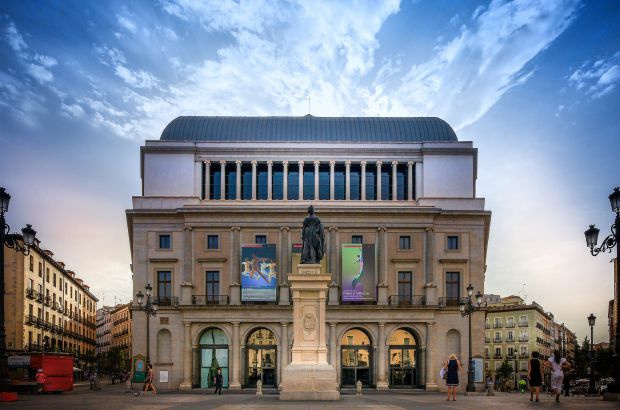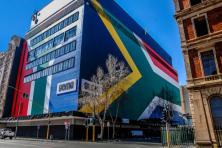
This article is part of The Road through Paris, a series leading up to the COP21 international climate talks in December. It is also the sixth in an eight-week blog series from New Energy Cities detailing the state of the low-carbon city movement.
Dedicated funding is a critical ingredient for urban clean energy action, but securing it is one of the most persistent challenges that local governments face today.
Some leading communities are marching ahead on their own: in 2006, Boulder, CO residents approved the first carbon tax in the U.S., both to reduce emissions and to help pay for the city’s climate action plan. In June 2014, Johannesburg, South Africa issued green bonds for low-carbon energy and transportation projects, including a biogas-to-energy project, a solar geyser (low-cost hot water heating) initiative, and dual-fuel buses.
But not all urban leaders have the authority or political support to levy taxes and issue bonds at the scale necessary to implement their climate and clean energy plans. Global finance leaders recognize this problem—especially acute in developing countries—and are joining forces to solve it:
- In September 2013, the World Bank announced a Low-Carbon Livable Cities Initiative to encourage 300 of the largest cities in developing countries to plan for low-carbon, climate-smart investment. Recognizing that many cities in developing countries lack credit ratings necessary to borrow money in capital markets, the Bank is aiming to help cities become more attractive to private investors by increasing their creditworthiness. One example is Lima, Peru (pop. 8.5 million), which the World Bank assisted to secure an improved credit rating to raise $130 million to improve the city’s bus rapid transit system.
- In 2014, nongovernmental organizations, international financial institutions, and commercial banks formed the Cities Climate Finance Leadership Alliance to identify barriers to cities in accessing capital and accelerate new approaches to unlock capital flows for low-carbon investment in cities.
- In 2015, the Global Commission on the Economy and Climate—a group of former heads of state, national finance ministers, and leading global economists—recommended that international institutions, city networks, and banks develop an integrated package of $1 billion over five years to support the world’s largest 500 cities in reducing carbon emissions and building urban resilience. The Commission estimated that such a package could leverage at least $20 billion in private investment for low-carbon cities.
National and state governments are also stepping in:
- In 2009, Japan’s Ministry of the Environment announced a Green New Deal fund of 55 billion yen (equivalent to $567 million) to support local governments on environmental initiatives such as home energy efficiency programs, residential solar installation, and environmentally friendly energy infrastructure projects. One recipient, Kawasaki City (pop. 1.453 million), announced in 2014 that it would direct 500 million yen (approximately $4.1 million) from this program to smart city improvements and distributed renewable energy, as part of a joint emergency preparedness and carbon reduction effort.
- From 2008 through 2013, over $1 billion in Regional Greenhouse Gas Initiative (RGGI) revenue supported energy efficiency and clean energy programs in participating New England and Mid-Atlantic U.S. states, with 15% on average going directly to municipal, state, and community programs. The Massachusetts Green Communities Division, for example, has provided direct support to all 351 Massachusetts cities and towns (as Climate Solutions described in 2012 and 2013), including grants for energy efficiency and renewable energy to 110 communities that earned the Green Communities designation. New York State’s Cleaner, Greener Communities program has also funded development of regional sustainability plans, and allocated $90 million in competitive funding to implement market-transforming sustainability initiatives.
- Since 2010, the European Investment Bank’s European Local ENergy Assistance (ELENA), has directly benefited over 30 local government projects—including London’s expansion of district heating networks; Bristol, UK’s Energy Service; and a large-scale investment in electric vehicles and charging infrastructure in Madrid, Spain. By covering up to 90% of technical assistance costs for a local government to scope and finance an energy investment program, ELENA aims to help local governments—many without the capacity and expertise to implement large energy projects—attract funding from private banks and other entities. (With this support, the city of London has also formed its own small finance/project development team to propose and structure projects for district heating.)
- In September 2015, the state of South Australia announced its aim to attract $10 billion in low-carbon investment, with the specific purpose of supporting the city of Adelaide to become the first carbon-neutral city in the world.
Philanthropic funding has been another catalytic source of support for community clean energy innovation:
- In Boston, MA (pop. 646,000), the Barr Foundation and former Mayor Thomas Menino partnered to convene the Boston Green Ribbon Commission, a group of representatives from the city’s leading economic sectors to develop shared approaches to addressing climate change. In 2015, the Commission created a Renewable Energy Leadership Prize (also with $100,000 from the Barr Foundation) to fund the organization or consortium of organizations that “develops the most compelling strategy for large-scale renewable energy generation from either on-site or off-site sources.”
- The Carbon Neutral Cities Alliance facilitates the allocation of an Innovation Fund—supported by Bloomberg Philanthropies, Garfield Foundation, the JPB Foundation, Summit Foundation, and Surdna Foundation—through a competitive process in which the Alliance’s members submit proposals to advance best practices among member cities.
Although funding remains a major challenge for many urban governments, partner institutions are ready to collaborate. Leaders can unlock funding if they look beyond city hall.





